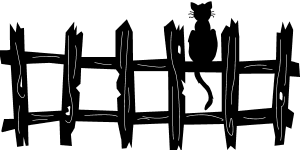Feasibility Studies for Fence Sitters
By Dan Boudreau
Are you sitting on a hot business idea, but don’t know if it’s a winner? This can be one of the most agonizing parts of the business start-up process. Those of us with tight budgets or no budgets simply do not have the option of tossing a few thousand dollars into the gaping bank account of a consultant to give us the magic answers.
Let’s imagine that you have scrimped and tucked away a small investment fund of $9,850 and you have a growing passion to own and operate a small shop that sells candles.
This feasibility process might just be the tool you need to make the critical go/no-go decision. It doesn’t have to cost anything more than your own time and if you approach it in a thoughtful, inquisitive way you should be able to produce believable results.
The feasibility study is a process that will enable you to answer these two important questions:
1. Is the business idea workable?
2. If the idea is workable, will it be profitable?
Before launching, here are a few points about feasibility studies:
* A feasibility study precedes the business plan.
* You might do feasibility studies for several different businesses before arriving at your decision to move on to the business planning stage.
* The information you gather for your feasibility study will be useful should you decide to proceed with a business plan.
* Some feasibility studies can be very quick and inexpensive and some can take months, or even years, and cost thousands of dollars.
* It’s ok to use round numbers and approximations – just be sure to err on the high side for your expenses.
* If you feel like you are guessing too much, you’re probably right. Do more research until you trust your numbers.
Here are the nine steps:
1. Determine the total market potential.
This is the total number of people that buy a product or service.
2. Determine your share of the market.
Market share is the total number of people who will buy YOUR product or service.
3. Calculate the cost of your buildings, fixtures and equipment.
This includes all costs related to your building or facility, such as fixtures, shelves, renovations, counters, display cases, etc.
4. Calculate the cost of your merchandise.
This is the wholesale cost of the products or services you sell to your customers. In financial statements, it is referred to as Cost of Goods Sold (COGS).
5. Calculate your cash operating expenses.
This consists of all costs to operate the business, including utilities, rent, wages, insurance, advertising and more.
6. Determine your budget for other expenses.
Have you missed any miscellaneous costs that don’t fit in the other categories? This might include items like trade shows, refunds, donations, sponsorship, warranties, travel/meals.
7. Subtract your total expenses from your total sales.
First, add together your totals from steps 3, 4, 5 and 6. This will give you total expenses. Then subtract your total expenses from your total sales. The formula looks like this: Step 2 minus (Steps 3 + 4 + 5 + 6) = answer.
8. Calculate the return on your investment.
Simply put, you can place your investment in a no-risk savings account, avoid all the risk and fuss of going into business, and collect a very meager interest. If you place $100 into a savings account and it earns you $5 for year one, you got a 5% return on your investment (ROI).
9. Make your go/no-go decision.
The information above and everything you learn about your business by going through the process, should prepare you to make this decision.
Please keep in mind that we are using fictitious numbers for this example:
CANDLE SHOP FEASIBILITY
1. Total Market Potential
Let’s say our secondary market research shows there are 20,000 people in the market area who spend an average of $100 each on candles and accessories each year. This would mean the total market potential is $2,000,000. Oooeee! I don’t know about you but I’m already rubbing my hands together.
2. Market Share
Our research shows us that 1000 of the people in our market area will buy from our candle shop. This would bring is 1000 X 100.00 = $100,000.00 in sales. Yahoo! Stand back, we’re goin’ in and we’re gonna be rich!
3. Building, Fixtures & Equipment
Imagine that our fixtures, shelving, renovations, counters, display cases add up to $30,500. …Gulp!
4. Cost of Merchandise
Suppose we determine that candles, matches, wax and candle making kits for year one add up to a total of $30,000. Eeek!
5. Cash Operating Expenses
Let’s say we were able to dig up financial statements for a similar business and that our utilities, rent, wages, insurance, advertising and all those other trinkets… cost us $35,400 for year one. Hmm… has someone jimmied the thermostat?
6. Budgeting for Other Expenses
Still in the spirit of wild-eyed brainstorming, we toss in a slush fund of $1,600.
7. Sales Less Expenses
Breathless… we reach for the calculator and do this: $100,000 – (30,500 + 30,000 + 35,400 + 1,600) = $2,500. At this point it is not uncommon to see your life, at least your worldly belongings, flashing before your eyes. You might be thinking “all that money passing through my hands for this?”. Sorry, there’s more…
8. Return On Investment
The scenario above is not so bad. At least the print is black, not red. I have come to cherish black ink as a VERY good thing – especially in year one. If everything goes the way you are planning above your profit will be $2,500. In Canada where there is profit, there awaits our trusty old friends at the Canada Customs and Revenue Agency, with a giant tin tax-cup. That’s in the summer, during our seven months of winter they use a large snow shovel for collecting taxes! Let’s say that the $2,500 is earnings before taxes of $625 and at the very end of your long stressful year, you are left with blisters on your feet, bags under your eyes, and $1,875 profit. Yikes!
Is this a good deal or not? Is this a wise use of your $9,850? Let’s get back to the savings account concept for a moment. If you figure you could earn 5% ROI in a savings account, you will have $492.50 at the end of the year for no effort and no risk. If you socked the same amount into mutual funds under a Registered Retirement Savings Plan with a potential 10% ROI, you might net $985 but there is risk and you could make less or even lose part of your investment. Perhaps the 19% ROI that you will earn with the $1,875 is a reasonable deal. That’s your call and step nine.
9. Go/No-Go Decision
Remember, the decision is whether to get on to developing a proper business plan… or not. And if you do go ahead, your business plan will reveal more of the story, such as year two and three earnings.
There are numerous factors other than money that play on your decision. Is this a life-style choice for you? Do you have other choices? Do you love the kind of work you will be doing? Does your health factor into it? Will you be able to employ other family members? Has it been a life long dream that will eat away at you if you don’t do it? Will it enable you to locate in an area you wish to live in? Are there more attractive opportunities that are safer?
How risky is the candle business and how comfortable are you with that level of risk? Can you afford to lose the $9850? Worse, can you afford to lose more if things go really sideways?
What other opportunities will you miss while focusing on the candle business? Perhaps you could run this feasibility on those ideas and compare?
You have much to consider. Hopefully, the nine-step feasibility helps you learn about your business and provides you with enough information to get off the fence.
I trust you will make wise decisions and I wish you great success in your pursuits!
This article is from Chapter 4 of Business Plan or Bust!
You are welcome to publish this article providing you attach this statement with the link back to the RiskBuster website:
“Dan Boudreau is President and CEO of Macrolink Action Plans Inc and the RiskBuster Business Plan Oasis at http://www.riskbuster.com Writing your own business plan can be easy, fast and fun! Instantly download a free copy of Dan’s popular fast-track business plan template, The Shell, when you subscribe to the RiskBuster Oasis Insider at http://www.riskbuster.com”
The End

